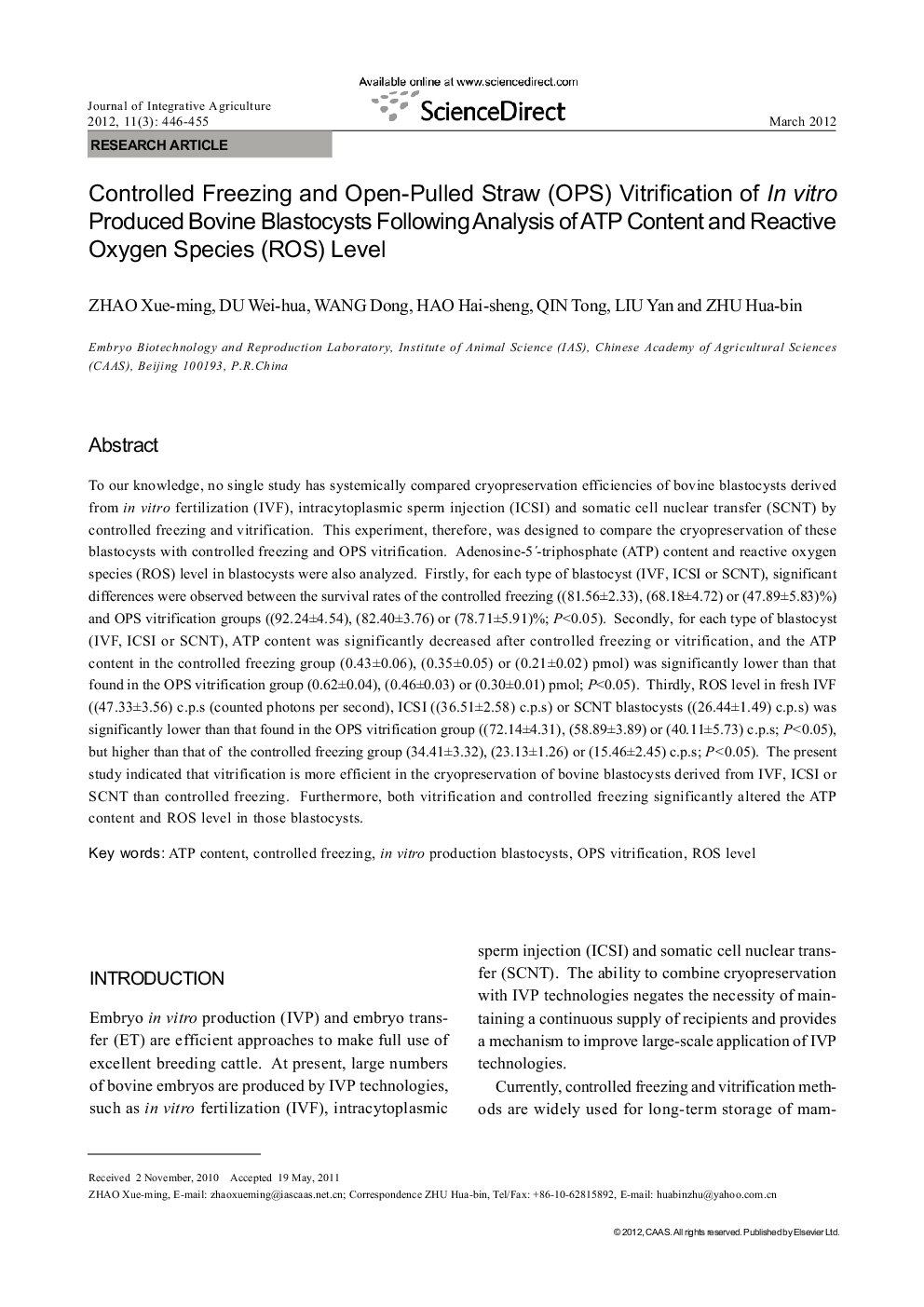| کد مقاله | کد نشریه | سال انتشار | مقاله انگلیسی | نسخه تمام متن |
|---|---|---|---|---|
| 4495262 | 1318749 | 2012 | 10 صفحه PDF | دانلود رایگان |

To our knowledge, no single study has systemically compared cryopreservation efficiencies of bovine blastocysts derived from in vitro fertilization (IVF), intracytoplasmic sperm injection (ICSI) and somatic cell nuclear transfer (SCNT) by controlled freezing and vitrification. This experiment, therefore, was designed to compare the cryopreservation of these blastocysts with controlled freezing and OPS vitrification. Adenosine-5′-triphosphate (ATP) content and reactive oxygen species (ROS) level in blastocysts were also analyzed. Firstly, for each type of blastocyst (IVF, ICSI or SCNT), significant differences were observed between the survival rates of the controlled freezing ((81.56±2.33), (68.18±4.72) or (47.89±5.83)%) and OPS vitrification groups ((92.24±4.54), (82.40±3.76) or (78.71±5.91)%; P<0.05). Secondly, for each type of blastocyst (IVF, ICSI or SCNT), ATP content was significantly decreased after controlled freezing or vitrification, and the ATP content in the controlled freezing group (0.43±0.06), (0.35±0.05) or (0.21±0.02) pmol) was significantly lower than that found in the OPS vitrification group (0.62±0.04), (0.46±0.03) or (0.30±0.01) pmol; P<0.05). Thirdly, ROS level in fresh IVF ((47.33±3.56) c.p.s (counted photons per second), ICSI ((36.51±2.58) c.p.s) or SCNT blastocysts ((26.44±1.49) c.p.s) was significantly lower than that found in the OPS vitrification group ((72.14±4.31), (58.89±3.89) or (40.11±5.73) c.p.s; P<0.05), but higher than that of the controlled freezing group (34.41±3.32), (23.13±1.26) or (15.46±2.45) c.p.s; P<0.05). The present study indicated that vitrification is more efficient in the cryopreservation of bovine blastocysts derived from IVF, ICSI or SCNT than controlled freezing. Furthermore, both vitrification and controlled freezing significantly altered the ATP content and ROS level in those blastocysts.
Journal: Journal of Integrative Agriculture - Volume 11, Issue 3, March 2012, Pages 446-455